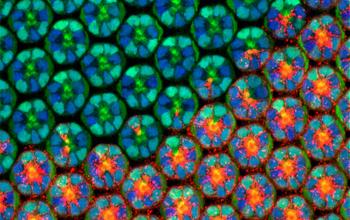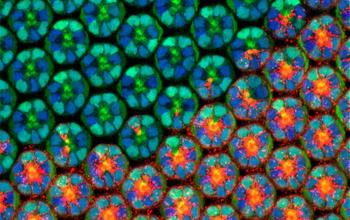
Credit: Northwestern University
The National Science Foundation (NSF), in partnership with the Simons Foundation, has launched four new centers to bring mathematical perspectives to the biological search for the Rules of Life.
The NSF-Simons Research Centers for Mathematics of Complex Biological Systems will explore how information encoded in DNA results in complex organisms with diverse forms, functions and behaviors when it is manipulated by changing environments across multiple time scales.
Such knowledge may lead to a predictive framework for understanding the pathways that lead from the DNA within a cell to the myriad expressions of an organism in its environment, with applications to agriculture and health.
"Many people think of math as proofs or calculations, but it's so much more," said Juan Meza, director of NSF's Division of Mathematical Sciences. "It's really a powerful tool that helps us study nature. By applying mathematics to the complex processes that underlie biology, we may finally be able to understand exactly how something as seemingly simple as a sequence of genes led to the broad diversity of organisms we see today."
Contingent on the availability of funds, each of the four centers will receive a total of $10 million to support a five-year project. NSF will distribute $20 million in federal funds that will be matched by $20 million provided independently by the Simons Foundation.
"We very much look forward to collaborating with NSF on this major public-private initiative to develop novel mathematical approaches to problems in biology," said Yuri Tschinkel, director for Mathematics and Physical Sciences at the Simons Foundation.
The four centers, selected through NSF's merit review process and an additional review by the Simons Foundation, are headquartered at the Georgia Institute of Technology, Harvard University, Northwestern University and the University of California, Irvine. Researchers will come together annually to share progress in meetings held at the Simons Foundation in New York City.
The centers will build research capacity at the interface between mathematics and biology through cross-disciplinary training of students and postdoctoral associates, outreach activities, and programs of nationwide scope for visiting researchers. Collectively, the centers will produce a new generation of scientists equipped to tackle questions that cannot be answered today.
"The NSF-Simons Centers will enable scientists to understand, in unprecedented clarity, how genes translate into so many diverse phenotypes," said Theresa Good, acting director of NSF's Division of Molecular and Cellular Biosciences. "This effort will help NSF address one of its 10 Big Ideas, Understanding the Rules of Life: Predicting Phenotype, explaining how the Rules of Life are expressed across many scales of structure and time."
The four centers are:
- The NSF-Simons Southeast Center for Mathematics and Biology will address how genetic information impacts phenotypic traits. Headquartered at the Georgia Institute of Technology, this center also includes researchers from Clemson University, Duke University, Tulane University, the University of South Florida, the University of Florida and the Department of Energy's Oak Ridge National Laboratory.
- The NSF-Simons Center for Mathematical and Statistical Analysis of Biology at Harvard University aims to use mathematics and statistics to accurately predict how organisms respond to changes in their genes and their environments.
- The NSF-Simons Center for Quantitative Biology at Northwestern University seeks to integrate hypothesis-driven mathematical modeling, data-driven mathematical analysis, and advanced imaging, genomics, and metabolomics tools to investigate the complex interplay between genetic programming and extrinsic inputs during organismal growth and development.
- The NSF-Simons Center for Multiscale Cell Fate Research at the University of California, Irvine, will study what determines cell fate — the differentiation of cells into specific biological cell types. The center will focus on three themes: cellular complexity and plasticity in skin, stochastic dynamics and migration of neural crest cells, and epigenetic control of stem cell specification. Data-driven and principle-based multiscale models of cell fate will guide experiments, with subsequent feedback to the modeling efforts.
###
Media Contact
Joshua Chamot
[email protected]
@NSF
http://www.nsf.gov





